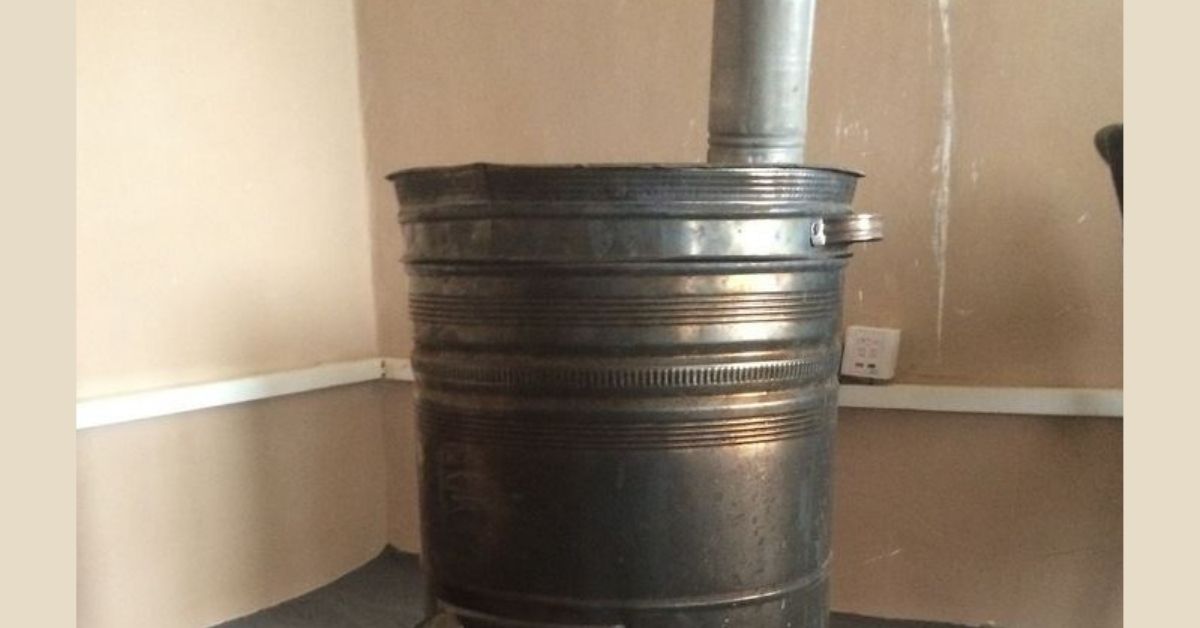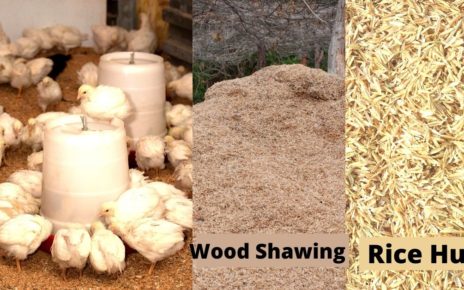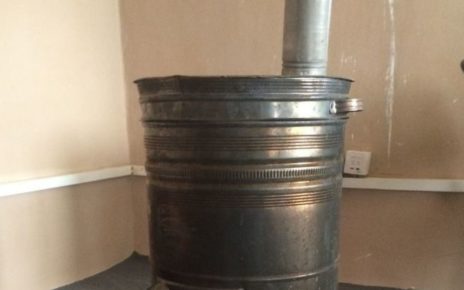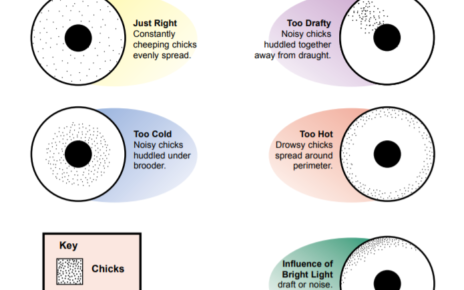Chicks Management in Poultry is very important part each and every precaution must be taken care properly to avoid any mistake.
Water Management.
Water lines should be filled prior to chick arrival, otherwise it will be waste of time and put stress on chicks. . In case, if you use nipple lines are installed on your poultry farm, cross check each nipple is working properly. This can be done by tapping or shaking the lines until each nipple has a drop of water visible on it. This process will also help chicks to find water more quickly once placed in the brooding area. If you using bell drinkers, all drinkers within the brooding area should be checked to ensure water is present.
If necessary, in hot climates, flush the water system at least twice daily to maintain a good water temperature.
If not using nipple system refill drinkers immediately.
But I personally don’t recommend bell drinkers for chicks at an early stage. Mini drinkers are better for chicks.
.
Drinkers must be cleaned daily minimum one time a day.
If you are using Traditional Drinkers, during washing of drinkers, never wash all drinkers at the same time.
Wash 50 % of drinkers once & leaving other drinkers to be present in the poultry farm.
Simultaneously.
Jaggery or sugar Water for Chicks-
1 When you receive chicks supplement them with Sugar or Jaggery water. 1 Kg Sugar or Jaggery is enough with 7 Ltr of water. After that you should give multivitamin and multi mineral for 3-5 days for better growth.
Water Temperature for Chicks.
Almost every poultry farmer maintain temperature but ignore water temperature. Water temperature must not go beyond 24-25 degree Celsius. Research shows, if you maintain proper water temperature birds achieve better weight gain without stress. So position of water tank should be such type direct sunlight must not effect drinking water tank. In winter cold water supply to chicks also can decrease water consumption. So always balance water temperature in every season. You can add cold water in summer and hot water in water supply to maintain better water temperature. In short never provide chilled or too warm water to chicks.
Level of waterer/Drinkers & Feeders must not be high.
Birds waste its energy standing up its feet while consuming feed or water then the bird remains in stress & its waste of its energy.
In the initial stage poultry feed you provide to birds gets mixed with chicks excreta. So never use this feed to poultry’s chicks. Take the feed out from the poultry farm and dry it in sunlight. After drying this feed you can use it when birds are about to sell on the last day.
Complete Poultry Training – Link
Temperature Management for chicks.
Preheating –
Minimum 2 – 4 hours preheating of poultry shed temperature before receiving chicks, so that the poultry shed’s temperature including litter’s temperature.
Check the chick’s feet, if the feet are cold, re-evaluate temperature.
Results of Cold Litter:-
- Poor early feed intake.
- Poor growth
- Poor uniformity an excellent indicator of floor temperature is the temperature of the chick’s feet. If the chick’s feet are cold, the internal body temperature of the chick is also reduced.
- Cold chicks start huddling with reduced activity and resulting in reduced feed and water intake and therefore reduced growth rate.
If chicks are comfortably warm, they will be be actively moving around the brooding area.
Crop Check-
At this time, a minimum of 95% of the crops should feel soft indicating chicks have successfully consumed feed and water.
Hard crops indicate chicks have not found adequate water and water availability should be checked immediately. Swollen and distended crops indicate chicks have located water but insufficient feed. In this case the availability and consistency of the feed should be immediately evaluated.
If chicks start panting they can lose 5-10 g of moisture in the first 24 hours and then dehydration will occur.
So always have eyes on birds, are they panting with an open mouth? This is a signal, birds are in stress. In this case you should decrease temperature.
Temperature requirements for chicks in different age.
First Week around 95 degree Fahrenheit.
First Week around 90 degree Fahrenheit.
First Week around 85 degree Fahrenheit.
First Week around 80 degree Fahrenheit.
First Week around 75 degree Fahrenheit.
Placement-
Placement per farm should ensure an “all in-all out” regime.
Delays in placement can contribute to the dehydration of chicks, resulting in higher chick mortality and reduced growth rate.
Transportation- Transportation must be provide ideal conditions for the chicks and the delivery time should be as short as possible.
Light intensity –
Lower the light intensity during chick placement to reduce stress. Lights should be brought to full intensity within the brooding area once all chicks have been placed again within 1-2 hour
Chicks must be carefully placed and evenly distributed near feed and water throughout the brooding area.
Acclimation period, check all systems and make adjustments if necessary. Monitor the distribution of the chicks closely during the first few days. This can be used as an indicator for any problems in feeder, drinker, ventilation or heating systems.
Chicks from smaller eggs (younger breeder flocks) require 1 degree Fahrenheit higher brooding temperatures because they produce less heat
Crop Check-Always Cross check Crop of Chicks Regularly, Time table Given Below.
This is the best method to Cross check your management, either you are going wrong or right.
Time of Crop Fill after Placement in Hours to be checked against % of Birds eating Food & Need to be cross check with Feed in Crop.
Check 20 -30 Birds randomly from different areas of the Poultry house & if you find below position, then your management is good.
Below Crop Fill Rate% is considered good.
After Placing Birds in 2 hours Crop of Bird should be 75%+ or above.
After Placing Birds in 4 hours Crop of Bird should be 80%+ or above.
After Placing Birds in 12 hours Crop of Bird should be 85%+ or above.
After Placing Birds in 24 hours Crop of Bird should be 95%+ or above.
After Placing Birds in 48 hours Crop of Bird should be 100%.
If you are not achieving targets as discussed above, in situations where target crop fill is not achieved, an investigation of the following areas is necessary on an immediate basis.
Humidity Control- Relative humidity, expressed as a percent, is a measure of the amount of water vapor that air is holding compared to the amount it can hold at a specific temperature. Warm air can possess more water vapor (moisture) than cold air, so with the same amount of absolute/specific humidity, air will have a higher relative humidity. A relative humidity of 60% means the air holds on that day (specific temperature) holds 60% of water needed for the air to be saturated. Saturated air has a relative humidity of 100%.
How is humidity measured?
A device to measure relative humidity is called a hygrometer. The simplest hygrometer – a sling psychometric – consists of two thermometers mounted together with a handle attached on a chain. One thermometer is ordinary. The other has a cloth wick over its bulb and is called a wet-bulb thermometer.
Related Humidity levels in the first 3 days after placement should be around 60%. For best results.
Feeder and Drinkers Required-Around 3 drinker and 3 feeders are required for poultry birds but in case of Nipple drinkers’ one nipple drinker is required for 10 birds.
Round Brooding– Always prefer round brooding for better performance

and should be divided in many parts



